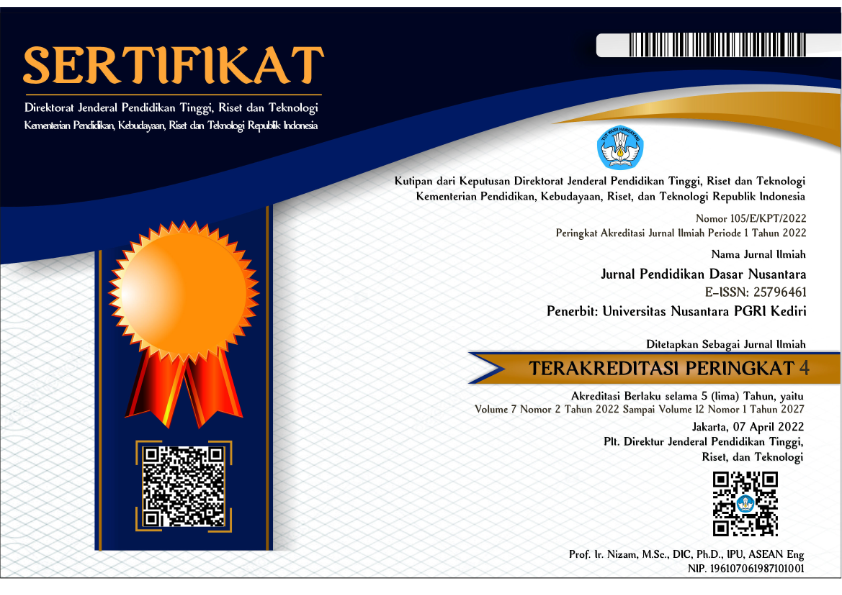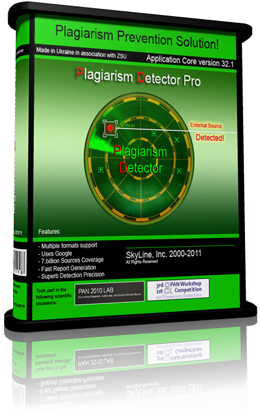Upaya Peningkatan Kemampuan Berpikir Kreatif Mahasiswa Dengan Pembelajaraan Kooperatif Berbasis Android
DOI:
https://doi.org/10.29407/jpdn.v6i1.14523Keywords:
creative, cooperative, androidAbstract
21st century skills include critical thinking, creative, collaborative and communicative. Early 21st century skills still show low results. The ability to think creatively is one of the important skills in 21st century abilities in addition to other abilities. The research aims to improve the ability to think creatively through Android-based cooperative learning. This study uses an experimental research type, a pre-experimental research design, and a one group pretest posttest design type. Analysis of research data in the form of creative thinking ability test sheets using indicators (1) Fluency, (2) Flexibility, and (3) Novelty (novelty). Data analysis uses the normalized gain score formula. The results of the study concluded that (1) the results of the pretest indicators of fluency, flexibility, and novelty were 2.85; 1.71; and 1.04. (2) the results of the posttest indicators of fluency, flexibility, and renewal respectively were 3.14; 3.02; and 3.35. (3) Students' creative thinking skills can be improved on the three indicators through android-based cooperative learning. Indicators of fluency and flexibility obtain moderate results with successive results of 0.50 and 0.54. The novelty indicator gives the highest result, which is 0.78.
Downloads
References
Azhari dan Somakim. 2013. Peningkatan Kemampuan Berpikir Kreatif Matematik Siswa Melalui Pendekatan Konstruktivisme di Kelas VII Sekolah Menengah Pertama (SMP) Negeri 2 Banyuasin III, Jurnal Pendidikan Matematika, 7(2): 1-12.
Coughlan A. 2007. LEARNING TO LEARN: Creative Thinking and Critical Thinking.DCU Students Learning Resources. (Online). (http://www.dcu.ie/ovpli/Student_Learning_Resources/design/PdfFiles/1DWhatiscreativeandcriticalthink ing.pdf) , Accesed on 3rd Maret 2016.
Durkheim, E. 1982. The Rules Of Sociological Method. New York: The Free Press.
Florebtina, N., & Leonard. 2017. Pengaruh Model Pembelajaran Kooperatif Terhadap Kemampuan Berpikir Kreatif Matematis Siswa, Jurnal Formatif, 7(2): 96-106.
Hake, R.R. 2007. Design-Based Research in Physics Education Research: A Review. (Online). ( http://www. physics.indiana.edu/~hake/DBRPhysics3.pdf), ,Accesed on 17th Desember 2013.
Heryati, T. 2019. Meningkatkan Kemampuan Berpikir Kreatif Peserta Didik dengan Model Pembelajaran Kooperatif Tipe Investigasi Kelompok, Jurnal Edukasi, 7(2): 69-90.
Kim, K. H. 2006. Can We Trust Creativity Test? A Review of the Torrance Tests of Creative Thinking (TTCT), Creativity Research Journal, 18(1): 3-14.
Mahmudi, A. 2011. Pengaruh Strategi MHM Berbasis Masalah terhadap Kemampuan Berpikir Kreatif Matematis dan Persepsi Terhadap Kreativitas. Yogyakarta: FMIPA UNY. Makalah ini termuat pada Jurnal Cakrawala Pendidikan Lembaga Pengabdian Masyarakat Universitas Negeri Yogyakarta Tahun 2011.
Mardiana, N. 2017. Peningkatan Physics Hots Melalui Mobile Learning (Mobile Learning to Improve Physics Hots), Journal PASCAL (Journal of Physics and Science Learning), 1(2): 1-9.
Muslich, Masnur. 2009. Melaksanakan PTK Itu Mudah (Clasroom Action Research) Pedoman Praktis bagi Guru Profesional. Jakarta: Bumi Aksara.
National Research Council (NRC). 1996. National Science Education Standarts. Washington: National Academy Press.
Siswono, T. Y. E. 2006. Desain Tugas untuk Mengidentifikasi Kemampuan Berpikir Kreatif Siswa dalam Matematika, Jurnal Pancaran Pendidikan, 19(63): 495-509.
Siswono, T. Y. E. 2008. Model Pembelajaran Matematika Berbasis Pengajuan dan Pemecahan Masalah Untuk Meningkatkan Kemampuan Berpikir Kreatif. Surabaya: Unesa University Press.
Sulistyaningrum, H., Winata, A., & Cacik, S. 2019. Analisis Kemampuan Awal 21st Century Skills Mahasiswa Calon Guru SD, Jurnal Pendidikan Dasar Nusantara, 5 (1), 142-158.
Suryadi, D., & Herman, T. 2008. Eksplorasi Matematika Pembelajaran Pemecahan Masalah. Jakarta: Karya Duta Wahana.
Sultoni, A., & Agoestanto, N. 2016. Upaya Peningkatan Kemampuan Berpikir Kreatif dengan Problem Based Learning Berpendekatan Scientific pada Materi Trigonometri, diseminarkan di Seminar Nasional Matematika yang diselengarakan oleh FMIPA UNES pada 1 Februari 2016.
Sykes, E. R. 2014 . New Methods of Mobile Computing: From Smartphone to Smart Education, Tech Trends , 26-37.
Downloads
Published
Issue
Section
License
Authors who publish with this journal agree to the following terms:
- Copyright on any article is retained by the author(s).
- The author grants the journal, the right of first publication with the work simultaneously licensed under a Creative Commons Attribution License that allows others to share the work with an acknowledgment of the work’s authorship and initial publication in this journal.
- Authors are able to enter into separate, additional contractual arrangements for the non-exclusive distribution of the journal’s published version of the work (e.g., post it to an institutional repository or publish it in a book), with an acknowledgment of its initial publication in this journal.
- Authors are permitted and encouraged to post their work online (e.g., in institutional repositories or on their website) prior to and during the submission process, as it can lead to productive exchanges, as well as earlier and greater citation of published work.
- The article and any associated published material is distributed under the Creative Commons Attribution-ShareAlike 4.0 International License

































